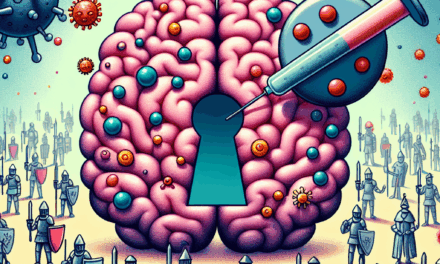The Impact of Children’s Thoughts on PTSD and Anxiety Post-Trauma

Post-Traumatic Stress Disorder (PTSD) and anxiety are significant mental health issues that can arise following traumatic experiences. While much research has focused on adults, the impact of trauma on children is equally critical. Children’s thoughts and perceptions play a crucial role in the development and persistence of PTSD and anxiety symptoms. This article explores the intricate relationship between children’s cognitive processes and their mental health post-trauma, providing insights into how these thoughts can influence recovery or exacerbate distress.
Understanding PTSD and Anxiety in Children
PTSD and anxiety disorders in children manifest differently than in adults. Understanding these differences is essential for effective diagnosis and treatment. Children may not have the vocabulary to express their feelings, making it challenging to identify their struggles. However, their thoughts and behaviors can provide significant clues.
Children exposed to trauma may experience a range of symptoms, including re-experiencing the traumatic event, avoidance of reminders, negative changes in thoughts and mood, and heightened arousal. These symptoms can interfere with daily functioning and development. Anxiety disorders, which often co-occur with PTSD, can further complicate a child’s emotional landscape, leading to excessive worry, fear, and avoidance behaviors.
Research indicates that the prevalence of PTSD in children varies, with estimates ranging from 1% to 14% depending on the population and type of trauma. Anxiety disorders are even more common, affecting approximately 7% of children worldwide. These statistics highlight the need for a deeper understanding of how children’s thoughts contribute to these conditions.
The Role of Cognitive Appraisals
Cognitive appraisals refer to the personal interpretations and evaluations of events and experiences. In the context of trauma, children’s appraisals can significantly influence their emotional responses and coping mechanisms. Negative appraisals, such as viewing the world as unsafe or believing they are to blame for the trauma, can exacerbate PTSD and anxiety symptoms.
Studies have shown that children who perceive their trauma as overwhelming and uncontrollable are more likely to develop PTSD. Conversely, those who view the event as a challenge to overcome may exhibit greater resilience. These appraisals are shaped by various factors, including the child’s developmental stage, previous experiences, and the support they receive from caregivers and peers.
Interventions that target cognitive appraisals, such as cognitive-behavioral therapy (CBT), have been effective in reducing PTSD and anxiety symptoms in children. By helping children reframe their thoughts and develop healthier appraisals, these therapies can promote recovery and resilience.
The Influence of Memory and Rumination
Memory plays a crucial role in the development and maintenance of PTSD and anxiety. Traumatic memories can be intrusive and distressing, leading to re-experiencing symptoms. Children may struggle to process these memories, leading to confusion and fear. The way children remember and interpret their trauma can significantly impact their mental health.
Rumination, or the repetitive focus on distressing thoughts and memories, is a common cognitive process in children with PTSD and anxiety. This pattern of thinking can intensify negative emotions and hinder recovery. Children who ruminate on their trauma may become trapped in a cycle of distress, making it difficult to move forward.
Interventions that address memory processing and rumination, such as trauma-focused CBT, can help children reprocess their memories in a way that reduces distress. By teaching children strategies to manage intrusive thoughts and memories, these interventions can promote healing and resilience.
The Impact of Self-Efficacy and Control
Self-efficacy, or the belief in one’s ability to influence events and outcomes, is a critical factor in children’s responses to trauma. Children with high self-efficacy are more likely to engage in adaptive coping strategies and exhibit resilience. Conversely, those with low self-efficacy may feel helpless and overwhelmed, increasing their risk for PTSD and anxiety.
Research has shown that children who perceive a sense of control over their environment and experiences are less likely to develop PTSD. This sense of control can be fostered through supportive relationships, skill-building activities, and opportunities for autonomy. Interventions that enhance self-efficacy, such as problem-solving training and empowerment programs, can promote recovery and resilience in children post-trauma.
By fostering a sense of control and self-efficacy, caregivers and mental health professionals can help children navigate the challenges of trauma and build a foundation for long-term well-being.
The Role of Social Support and Attachment
Social support and attachment relationships play a vital role in children’s recovery from trauma. Secure attachments with caregivers provide a sense of safety and stability, which can buffer against the negative effects of trauma. Children who feel supported and understood are more likely to develop adaptive coping strategies and exhibit resilience.
Research has shown that children with strong social support networks are less likely to develop PTSD and anxiety symptoms. Supportive relationships can provide emotional validation, practical assistance, and opportunities for positive social interactions. These factors can enhance children’s sense of safety and control, promoting recovery and resilience.
Interventions that strengthen social support and attachment relationships, such as family therapy and peer support programs, can be effective in promoting recovery from trauma. By fostering supportive environments, caregivers and mental health professionals can help children build resilience and navigate the challenges of trauma.
Case Studies and Real-World Examples
To illustrate the impact of children’s thoughts on PTSD and anxiety post-trauma, it is helpful to examine real-world examples and case studies. These examples provide valuable insights into the complex interplay between cognitive processes and mental health outcomes.
Case Study: The Role of Cognitive Appraisals in Recovery
Consider the case of a 10-year-old girl who experienced a natural disaster. Initially, she viewed the event as terrifying and uncontrollable, leading to significant PTSD symptoms. However, with the support of her family and a therapist, she began to reframe her thoughts. She started to see the event as a challenge she could overcome, which helped reduce her symptoms and promote recovery.
This case highlights the importance of cognitive appraisals in children’s responses to trauma. By helping children develop healthier appraisals, caregivers and mental health professionals can promote resilience and recovery.
Case Study: The Impact of Rumination on Mental Health
Another example involves a 12-year-old boy who survived a car accident. He struggled with intrusive memories and ruminated on the event, leading to significant anxiety and distress. Through trauma-focused CBT, he learned strategies to manage his thoughts and memories, which helped reduce his symptoms and improve his mental health.
This case illustrates the impact of rumination on children’s mental health post-trauma. By addressing rumination and teaching children strategies to manage their thoughts, interventions can promote healing and resilience.
Case Study: Enhancing Self-Efficacy and Control
A 9-year-old boy who experienced bullying at school initially felt helpless and overwhelmed. However, through a school-based empowerment program, he developed a sense of control and self-efficacy. He learned problem-solving skills and assertiveness techniques, which helped him cope with the bullying and reduce his anxiety symptoms.
This case demonstrates the importance of self-efficacy and control in children’s responses to trauma. By enhancing these factors, interventions can promote resilience and recovery.
Case Study: The Role of Social Support in Recovery
A 7-year-old girl who witnessed domestic violence initially struggled with PTSD symptoms. However, with the support of her extended family and a community support group, she began to feel safe and understood. This support helped her develop adaptive coping strategies and reduce her symptoms.
This case highlights the critical role of social support in children’s recovery from trauma. By fostering supportive environments, caregivers and mental health professionals can promote resilience and healing.
Case Study: The Impact of Attachment Relationships
A 5-year-old boy who experienced a traumatic separation from his parents initially exhibited significant anxiety and distress. However, through attachment-based therapy, he developed a secure relationship with his foster parents, which helped reduce his symptoms and promote recovery.
This case illustrates the importance of attachment relationships in children’s responses to trauma. By strengthening these relationships, interventions can promote resilience and healing.
Interventions and Strategies for Supporting Children Post-Trauma
Effective interventions and strategies are essential for supporting children post-trauma. These approaches can help children process their experiences, develop adaptive coping strategies, and build resilience.
Cognitive-Behavioral Therapy (CBT)
Cognitive-behavioral therapy (CBT) is a widely used intervention for children with PTSD and anxiety. CBT focuses on helping children identify and reframe negative thoughts, develop coping skills, and reduce distressing symptoms. By addressing cognitive processes, CBT can promote recovery and resilience.
CBT typically involves several components, including psychoeducation, cognitive restructuring, exposure therapy, and relaxation techniques. These components are tailored to the child’s developmental level and specific needs, making CBT a flexible and effective intervention for children post-trauma.
Trauma-Focused CBT (TF-CBT)
Trauma-focused CBT (TF-CBT) is a specialized form of CBT designed specifically for children who have experienced trauma. TF-CBT incorporates elements of traditional CBT with trauma-specific interventions, such as trauma narrative development and processing.
TF-CBT has been shown to be effective in reducing PTSD and anxiety symptoms in children. By helping children process their trauma in a safe and supportive environment, TF-CBT can promote healing and resilience.
Play Therapy
Play therapy is an intervention that uses play as a medium for children to express their thoughts and feelings. Play therapy can be particularly effective for younger children who may not have the verbal skills to articulate their experiences.
Through play, children can explore their emotions, develop coping skills, and process their trauma. Play therapy provides a safe and supportive environment for children to work through their experiences and build resilience.
Family Therapy
Family therapy is an intervention that involves the child’s family in the therapeutic process. Family therapy can help improve communication, strengthen relationships, and provide support for the child post-trauma.
By involving the family in the therapeutic process, family therapy can enhance the child’s sense of safety and support, promoting recovery and resilience. Family therapy can also address any family dynamics that may be contributing to the child’s distress.
Peer Support Programs
Peer support programs provide opportunities for children to connect with others who have experienced similar traumas. These programs can offer emotional validation, practical assistance, and opportunities for positive social interactions.
By fostering supportive peer relationships, peer support programs can enhance children’s sense of safety and control, promoting recovery and resilience. These programs can also provide opportunities for children to develop social skills and build a sense of community.
Conclusion
The impact of children’s thoughts on PTSD and anxiety post-trauma is a complex and multifaceted issue. Children’s cognitive processes, including appraisals, memory, rumination, self-efficacy, and social support, play a critical role in their responses to trauma. By understanding these processes and implementing effective interventions, caregivers and mental health professionals can promote recovery and resilience in children post-trauma.
Through interventions such as cognitive-behavioral therapy, trauma-focused CBT, play therapy, family therapy, and peer support programs, children can develop adaptive coping strategies, process their trauma, and build resilience. By fostering supportive environments and enhancing children’s sense of control and self-efficacy, we can help children navigate the challenges of trauma and build a foundation for long-term well-being.
Ultimately, by addressing the impact of children’s thoughts on PTSD and anxiety post-trauma, we can promote healing and resilience, helping children thrive in the face of adversity.





